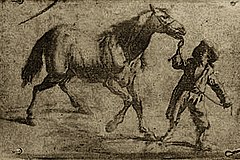Project briefs are of different types and allow different levels of negotiation and artistic freedom.
(what follows is from the Course Manual and will be revisited in Assignment 5)
Commercial (client-led) briefs
Any engagement with commercial photographic enterprise will involve a brief of some kind. This may be in the form of a legally binding contract, or it may be something much more informal. In a commercial context, a brief will usually be a document that is the conclusion of a verbal or email discussion about what the client is hoping to achieve from a shoot – i.e. what they want you to communicate with your photographs – and, importantly, what the intended outcome will be. Will the photographs be used in a book, for example? Or on a website? This second aspect has important ramifications in relation to the size, format and quality of files they are expecting, and may influence your choice of equipment. A brief written by a client may be fairly openended or it may include a list of specific products or subjects that need to be photographed, including aspect ratio and crop. It may be something prescriptive, to be referred to throughout the shoot, or something more abstract that you will respond to photographically using your own initiative.
A brief should align the expectations of the clients with a realistic outcome on the part of the photographer. Whether you’re being paid generously for your services or doing a job as a favour, it is extremely important to have, in writing (email is fine), an agreement that clearly identifies the needs of the client and what you agree to supply them with, in order to prevent at best disappointment, or at worst, being sued. A brief should include the following:
• A summary of the project and general purpose of the photographs.
• What the photographs should communicate.
• A list of any specific shots the client would like.
• The amount of time that you will spend on the shoot (hours? days?) and timings.
• The number of images you will supply to the client, and whether they will be processed or unprocessed.
• Your fee, as well as/including any expenses you will incur.
• Whether (if working digitally) your time for file processing is included or, if not, how this File format and size of processed images (and possibly colour profile and bit-depth).
• Permission for using your photographs from the shoot: how will you permit the client to use your images, and for what period of time?
• Whether you will administer Model and/or Property Release Forms.
• Details of any other parties involved in the shoot, e.g. models/subjects.
People who are in a position to commission photography may do so on a regular basis and, if so, will be expert in drawing up a brief and/or contract; other, just as valuable, clients may not. It may be down to you to put into writing their verbal description of what they want you to do. Forming a brief should be a negotiation between you and the client, and the specifics will depend on many factors, including your own particular workflow. The important thing is to make
sure all parties are content with all aspects of the brief before commencing a shoot.
[Although briefs are not discussed specifically, a wealth of related information can be found in Beyond the Lens: Rights, Ethics and Business Practice in Professional Photography, London: The Association of Photographers]
Self-authored briefs
This and subsequent courses you may study with OCA will ask you to set your own assignment briefs. The purpose of this is to allow you more creative freedom, to help you become a more independent student, and to encourage you to think of yourself as a creative, independent practitioner pursuing your own interests and working on personal projects, as opposed to making work within the confines of a prescriptive art and design course.
Developing the ability to articulate your ideas for projects or enterprises is an essential skill for professional practice, within both commercial and art-based practice. For instance, you may identify a potential business opportunity to collaborate with an organisation that might be able to commission you, and approach them to propose a project. Or you may have an idea for a documentary or fine art project and need to apply for funding. In either case, you’ll need to
write a brief. (This is explored further at Level 3.)
A self-directed brief, particularly one conceived within an arts context (e.g. an academic environment such as OCA, or a proposal to a funding body such as the Arts Council – www. artscouncil.org.uk) will include some, but not necessarily the majority of the points listed above. You’ll still need to discuss money, in particular your justification for any special resources you may require. Appropriately contextualising the project within a critical framework rather than an economic one will be the most significant difference between the two types of brief. If you’re requesting funding or support for production, for an exhibition or publication, or for an artist’s residency, you must be able to convince whoever writes the cheques that you’re conversant with the subject you wish to research and that you have the ability and commitment to complete
the project.
Unlike a commercial brief, a self-directed brief is not a rigid plan but a more organic document, which you’ll appraise and update as you go along. This is certainly the case with the selfdirected projects you’ll propose whilst studying with the OCA.






























